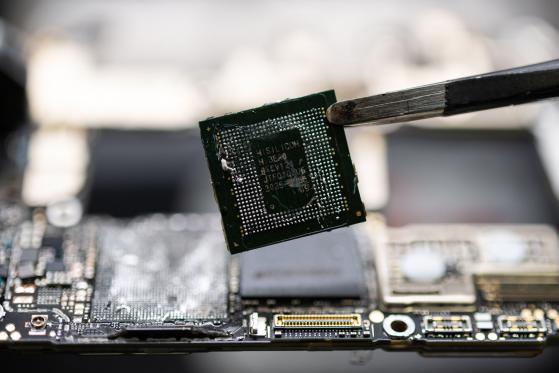Smartphone launches aren’t typically mired in controversy, but the debut of Chinese firm Huawei’s new Mate 60 Pro handset has prompted international scrutiny and an official probe from the US government.
A teardown of Huawei’s new handset showed that the device contains technology far superior to what was previously thought possible in the Chinese tech sector.
The Mate 60 Pro is powered by a seven-nanometer microchip, a level of technology the US has attempted to prevent entering China through a spate of sanctions and export controls.
Chinese state media outlets have pointed to Huawei’s supposed breakthrough to brag that America’s policy of “extreme suppression has failed”.
China’s foreign ministry spokeswoman Mao Ning told reporters on Friday that “we have always opposed politicising trade and technology issues and overstretching and abusing the concept of national security”.
She said that sanctions “will not stop China’s development, it will only strengthen China’s resolve and capability to seek self-reliance and technology innovation”.
However, questions have arisen as to how Huawei has managed to crack the seven-nanometer threshold.
The US government has launched an official probe into the development, while South Korean chipmaker SK Hynix has opened an investigation into how its NAND flash memory tech ended up in the Mate 60 Pro.
SK Hynix stated that it has complied with US-led tech sanctions against China, telling Bloomberg that it “no longer does business with Huawei since the introduction of the US restrictions against the company”.
The seven-nanometer chip inside a Huawei Mate 60 Pro – Credit: James Park/Bloomberg
Industry body the Semiconductor Industry Association (SIA) recently warned that Huawei has been building an underground semiconductor railroad with $30 billion of state financial backing.
According to the SIA, Huawei is building these foundries under different corporate identities near the company’s Shenzhen headquarters in order to obfuscate supply lines.
Mate 60 Pro still behind global benchmark
State-aligned Huawei was at the top of the global smartphone game prior to the Trump administration’s crackdown on tech exports in 2018.
These sanctions, which have intensified in the Biden era, aim to cut the supply of bleeding-edge semiconductor technology to the Chinese market in order to hobble the Communist dictatorship’s advancement of AI and military tech.
Under the sanctions, previous-generation semiconductors, or microchips, designed by Nvidia, Intel (NASDAQ:INTC) and AMD, and manufactured by Samsung (KS:005930) and TSMC, can still be exported to China.
Given China’s lack of engineering nous in the semiconductor industry, this has left Huawei at a material technological disadvantage.
Though the Mate 60 Pro’s seven-nanometer chips have caught global leaders by surprise, they still remain behind the five-nanometer global benchmark.
Fewer nanometers mean more transistors can be printed on a microchip, meaning more advanced computational efficiency a device is capable of.
“The Mate 60 Pro is far from a full comeback,” said Julian Evans-Pritchard, head of China Economics at Capital Economics.
Evans-Pritchard noted that, prior to US sanctions, Huawei sold more phones in Europe than Apple (NASDAQ:AAPL) in 2018. Since then, its market share has all but collapsed as it fell behind the global technological standard.
Current flagship phones use four or five-nanometer chips and are expected to move to three nanometers by the end of the year.
“The Mate 60 Pro, with its mid-range performance and lack of access to Google’s app ecosystem (due to US sanctions), is unlikely to trigger much of a revival in overseas interest,” Evens Pritchard stated.
Read more on Proactive Investors AU
